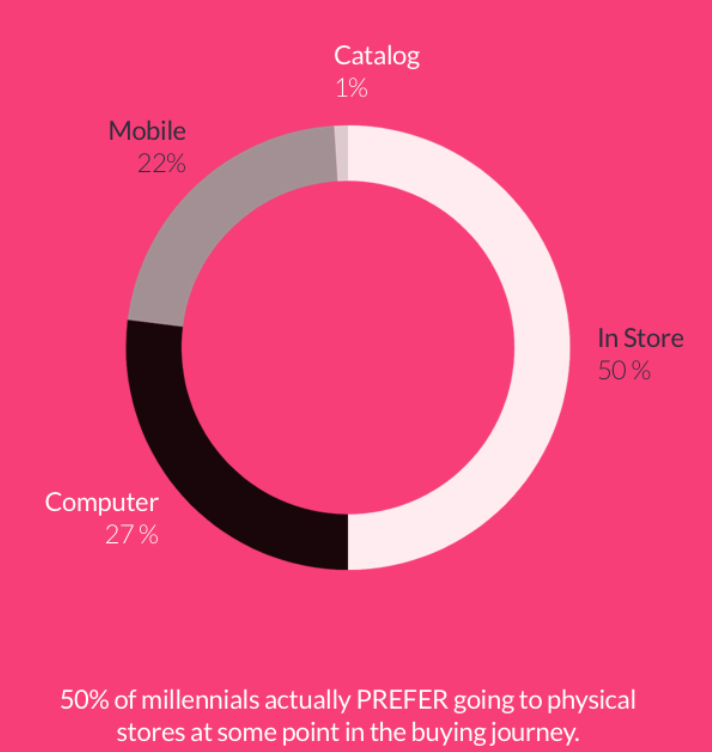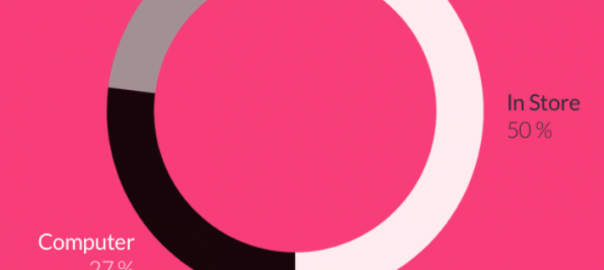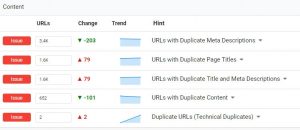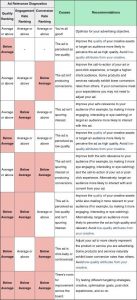— April 9, 2019
Global ecommerce is growing at an unprecedented pace. In 2017 it reached around $ 2.3 trillion and is expected to hit $ 4.5 trillion in 2021 (according to a Statista report). In the US alone, ecommerce represents almost 10 percent of retail sales — a figure that is growing by nearly 15 percent each year.
Retailers can’t expect to remain competitive unless they are present on their customers’ preferred channels. Investments in online, digital and mobile channels is a necessity. In fact, eCommerce/digital influences up to 56% of in-store purchases. Many consumers are also shopping online via their mobile devices. As much as 11 percent of online shoppers now shop online via their smartphone on a weekly basis, and 35 percent say it will become their main purchasing tool. (source – Shopify)
The Dominance of Amazon
55% of Americans begin their product searches on Amazon, whose sales represent 44% of all eCommerce sales in the US.
On average, two in five consumers (41 percent) receive 1-2 packages from Amazon per week. That number jumps to half (50 percent) for consumers ages 18-25, and 57 percent for consumers ages 26-35. Many consumers look to Amazon as the model for speed and price — a fourth (26 percent) report they have purchased a product through Amazon because it was faster and less expensive than other options. Fifteen percent of consumers report they have purchased a product through Amazon because it was faster than other options, even if the product was more expensive.
Retailers can compete by offering third-party shipping options. Forty-four percent of consumers have used some kind of same-day delivery service in the past year, indicating they are growing more comfortable with and reliant on these services. More than half of consumers under 25 (54 percent) say same-day shipping is their number one purchase driver, followed by next-day shipping and free returns or exchanges (53 percent).

(Source: Walker Sands’ Future of Retail 2018)
Social Media Shopping
More than half of consumers (54 percent) report using social media as part of their path to purchase in some capacity, whether it’s to browse, research, gain inspiration or purchase. According to recent data by Avionos, 40 percent of consumers have made a purchase via Facebook, 13 percent have made a purchase through Instagram and 12 percent have made Pinterest purchases. In another survey from Curalate, 52 percent of respondents discovered a new retail product on Facebook that they were interested in buying. Among 18- to 34-year-olds, that number rises to 78 percent.
Research from Mintel found that in the US, for instance, social media ranks as the number one influencer of fashion shopping amongst women 18-24, and nearly 32% of women aged 18-34 are open to buying clothing directly from a social media platform.
Many retailers use Facebook advertising as a way to reach prospective customers. However, many brands are unsure how to target audiences in the light of recent changes at Facebook. Facebook removed its Partner Category targeting options, which previously allowed third-party data providers to provide their targeting segments directly on Facebook.
Given the importance of prospecting and the shortcomings of most advertisers’ first-party data assets, third-party data is still a must-have for the modern marketer. While Partner Category targeting is no longer an option through Facebook, what many brands are unaware of it that third-party custom segments are still allowed by establishing a relationship directly with a data provider.
Going forward, brands and agencies must seek to build one-to-one partnerships with third-party data providers. The benefit of this is that brands can now open up deeper targeting capabilities for their campaigns. While Facebook’s Partner Categories offered data on demographics and some behavioral data, available segments lacked insights into deeper consumer motivations that can be revealed via psychographic data. Marketers now have a new opportunity to fill in the gaps with deeper insights and better audience segmentation.
V12 AudienceLink for Facebook
V12 offers a custom audience solution for Facebook called V12 AudienceLink, an industry-leading third party data set with 100% opt-in emails. We follow rigorous quality and privacy standards, ensuring our sourcing collection methods undergo extensive due diligence to be 100% compliant with state and federal laws.
How the Process Works
- V12 will work with you to understand your campaign objectives and help you determine the best strategy to meet your needs.
- Based on your campaign goals, you may choose to reach your current customers using your internal customer data or create an acquisition campaign using V12’s third party data assets.
- Once we build your custom audiences, you may distribute to Facebook through your client account or approved Facebook integration partners.
The Role of Brick-and-Mortar
While many consumers feel comfortable purchasing online, there are several categories in which the brick-and-mortar experience still dominates. For example, 73% of consumers prefer to purchase clothes and apparel in a physical store.

50% of millennials prefer going to a physical store at some point in their buying journey. (Source: http://10ecommercetrends.com/)

Retailers will have to master both showrooming and webrooming for those consumers who start online and then visit a store to purchaser or vice versa. The path to purchase is not linear so in order to provide the most optimal experiences to fuel conversions, ecommerce companies must take better control of the customer journey.
The V12 Customer Data Platform helps marketers manage automated customer journeys that engage uniquely at every stage, based on each individual’s behavior. Retailers can create campaigns that recognize if customers have visited their website, browsed certain product categories, opened emails or visited their stores. By capturing each of these actions and integrating the data to develop deeper consumer insights, the most relevant content can be delivered to ensure consumers keep moving through the journey, increasing increase conversion rates and lifetime value.
Sample journeys include:
- Abandoned Cart
- Abandoned Browser
- Next Best Offer
- First Order
- Competition Conquests
- Engaged Non-Buyers
- Thanks for Purchase
- Loyalty
Retail of the Future
The shopping experience will continue to evolve as consumers embrace new technologies. Their connected lifestyles make researching, shopping and purchasing online just as natural as walking into a store to purchase. However, both ecommerce sites and physical locations are important. Consumers often research online but may prefer a brick-and-mortar location to make purchases across various categories, and many online stores have found value in opening physical locations. Retailers must evolve with the times and focus on providing unique experiences
Digital & Social Articles on Business 2 Community
(124)





